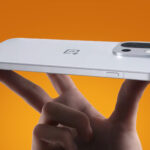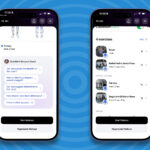For the past five years, I’ve used a folding phone as one of my primary devices, and the journey to finding the perfect size and style has taken many twists and turns.
The original Galaxy Fold introduced a new concept to the mainstream, but then, Samsung settled into a pattern of making small but important refinements each year. The Galaxy Z Fold 6 was the most refined version yet, but it started to struggle against competition that released thinner and lighter foldables.
The Pixel 9 Pro Fold showed that Samsung could have pushed the envelope — which they did months later in the somewhat-thinner Galaxy Z Fold Special Edition — and then the Magic V3 showed that the US doesn’t get the best phones.
Now it’s the turn of the Oppo Find N5. This phone was widely expected to be the OnePlus Open 2 before Oppo and OnePlus broke our hearts. It’s the world’s thinnest foldable — for now, at least — but it addresses several other criticisms of the book-style experience. After a week, I’m convinced it’s a blueprint for Samsung to copy with the Galaxy Z Fold 7. Here’s why.
Thickness matters, as does size and usability
Since the Galaxy Z Fold 2, Samsung has pushed for a narrower and taller aspect ratio than its rivals. The company has bet that people prefer the dimensions of a taller book versus a passport, but the Find N5 has the ideal form factor, and Samsung should shamelessly adopt the same.
The Find N5 is both taller and wider than the Galaxy Z Fold 6, but the form factor works as it’s significantly thinner. At 8.9mm thick when folded, it’s almost a third thinner than the Galaxy Z Fold 6. Although it’s only ten grams lighter, it feels more than this, thanks to the thin profile.
Samsung is aware of the need to improve the thickness of its devices, as it launched the Galaxy Z Fold Special Edition a few months after the Z Fold 6. Unfortunately, it is limited to South Korea and China, but even if it were widely available, I’m not sure it’s the solution.
I haven’t used the special edition, but the specs point toward a thinner foldable that also fixes some key problems. It’s 4.9mm thick when unfolded, although this rises to 10.6mm when folded. The Cover Display is 0.2-inches larger, while the main display is increased by 0.4mm. These are better specs, but they aren’t world-beating, so the Galaxy Z Fold 7 will need to push this boundary further.
It’s time to revamp the front display

As a result of the bigger and thinner design, Oppo has managed to make the front display larger. The Galaxy Z Fold 6 has a 6.3-inch Cover Display with 2600 nits peak brightness, while the Find N5 has a larger 6.62-inch display with 2450 nits peak brightness. The latter is more akin to a regular smartphone, which makes the Find N5 so comfortable to use with one hand or two.
Unfold it, and the Oppo Find N5 has a near-perfect form factor. The 8.12-inch display is the largest on a book-style foldable — unless you count the tri-fold Huawei Mate XT — and it’s bigger and thinner than the latest iPad Air. I returned to using the 7.6-inch main display on the Galaxy Z Fold 6, and I vastly prefer the bigger screen on the Find N5.
I have found that I use the front display far more as it’s just like a regular phone. It’s familiar and ergonomically friendly, and again, the ultra-thin body means it feels just like a regular phone when folded. On numerous occasions, I’ve accidentally mistaken it for my iPhone, especially when it’s in my pocket.
Camera and Performance are opportunities for Samsung

The Find N5 has mostly flagship specs throughout the experience, but there are a couple of areas where Samsung could revamp its lineup and be different.
The ultra-thin profile on the Find N5 required a custom-designed USB-C port, as well as custom internals to handle heat dissipation. The latter is provided by the 7-core Snapdragon 8 Elite, and from my testing, it’s clear that it’s significantly throttled.

It features one fewer core than the main Snapdragon 8 Elite that powers most of the best Android phones, but this new version is further throttled as well. Yes, the Find N5 has excellent heat dissipation, but there is a noticeable difference in the performance.
This presents an opportunity for Samsung. The overclocked “custom” Snapdragon 8 Elite for Galaxy is fantastic, but if Samsung is to go for a much thinner foldable, it might find that it needs a tweaked version. Improving the GPU performance on a “For Galaxy” version of the 7-core processor could give the Galaxy Z Fold 7 a definitive boost in performance.

There’s also an opportunity in the camera. The Find N5 features a 50MP main camera, an 8MP ultrawide camera, and a 50MP periscope telephoto lens that offers the 3x zoom and 6x hybrid zoom features that work so well on the OnePlus 13. It’s not an identical camera, but it is on par with many of the best phones.
In comparison, the Galaxy Z Fold 6 has similar wide and ultrawide cameras but needs an improved telephoto lens. The current 10MP telephoto offers 3x optical zoom but lacks the polish and quality that Samsung’s smartphones do. This camera setup hasn’t evolved in years, but it needs to improve for the Galaxy Z Fold 7 to have a fighting chance, especially as the Pixel 9 Pro Fold already offers a superior camera stack.
Everything else that Samsung should emulate

There’s more that the Galaxy Z Fold 7 needs to compete with. The Find N5 has the biggest battery on any foldable at 5,600 mAh, almost 30% larger than the Galaxy Z Fold 6. Similarly, it charges at 80W compared to 45W on Samsung’s fold, and it can support 50W wireless charging compared to 15W.
You may be thinking that some of this doesn’t matter as the Galaxy Z Fold has something no one else does: the S Pen. However, the Find N5 supports the Oppo Pen stylus, and unlike Samsung, it supports the stylus on both displays.
There’s also the software; OnePlus introduced the excellent Open Canvas on the OnePlus Open, and it’s now included on the Find N5. Essentially, it allows you to run up to three windows at once by virtually extending your display. It doesn’t have all the bells and whistles that Samsung’s multitasking does, but it’s the best overall use of multitasking on a big screen yet.
The Find N5 has the peak folding form factor

I’ve been a big fan of Samsung’s foldable lineup since it first launched, but over the past two years, they have become heavier and less appealing than the competition. Now, the Oppo Find N5 has proven that Samsung doesn’t have the best folding phone anymore, as Oppo has perfected the folding form factor.
It’s hard to see how the Find N5 can improve from here, but it’s clear that the seventh generation of Galaxy Fold needs to be a radical departure from the status quo. Well, I think Samsung needs to take these steps, but the company doesn’t need to.
The Oppo Find N5 isn’t launching outside a few key markets — and there’s no launch in the EU or the US — while the next thinnest, the Honor Magic V3, is more widely available globally but is not available in the US. This leaves the Pixel 9 Pro Fold, which is already a significant step forward from the Galaxy Z Fold 6 form factor. For the most part, Samsung is safe from the competition… for now.
Read the full article here













